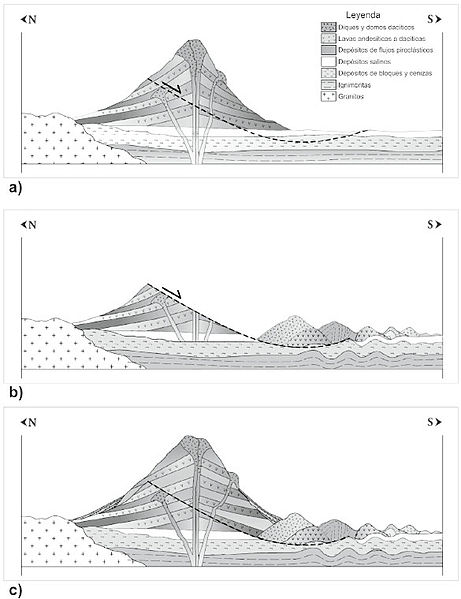1888 Ritter Island eruption and tsunami
On the morning of March 13, 1888, an explosion took place on Ritter Island, a small volcanic island in the Bismarck and Solomon Seas, between New Britain and Umboi Island. The explosion resulted in the collapse of most of the island and generated a tsunami with runups of up to 15 meters (49 ft) that caused damage more than 700 kilometers (430 mi) away and killed anywhere between 500 and 3,000 on neighboring islands, including scientists and explorers. This event is the largest volcanic island sector collapse in recent history.
A crescent-shaped remnant is all that is left of Ritter Island after its catastrophic collapse.
A sector collapse or lateral collapse is the structural failure and subsequent collapse of part of a volcano. Unlike a flank collapse, a sector collapse involves the central volcanic pipe. Sector collapses are one of the most hazardous volcanic events, often resulting in lateral blasts, landslides, and changes in volcanic eruptive behavior. Sector collapse can be caused by earthquakes, volcanic eruptions, gradual volcanic deformation, and other processes. Sector collapse events can occur on volcanoes at convergent and divergent plate boundaries. Sector collapses are generally very sudden; however, some attempts have been made to predict collapse events.
Sector collapse during the 1980 eruption of Mount St. Helens
Sector collapse process
Mudflow-induced property damage caused by the 1980 Mount St. Helens sector collapse
Debris avalanche deposit of Tata Sabaya volcano's sector collapse





